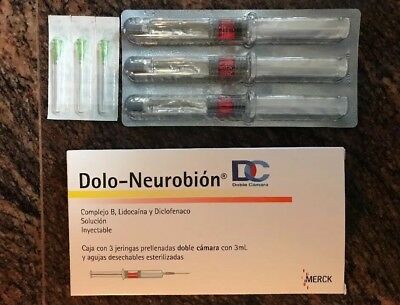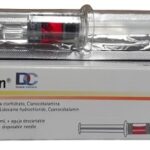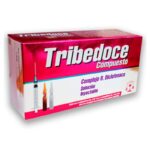Is Dolo Neurobion Injection Safe?

While Medicines are hugely important in healthcare, they also have the potential to cause problems. Unsafe medication practice and errors can cause serious harm to patients due to: side effects; adverse reactions; misuse; and how medicines are prescribed, dispensed, administered or monitored.
One of the best ways to reduce your risk of a medication error is to take an active role in your own health care. Learn about the medications you take — including possible side effects. Never hesitate to ask questions or share concerns with your doctor, pharmacist and other health care providers.
What is Dolo Neurobion Injection?
Dolo Neurobion Injection is a medication that contains Procaine Hydrochloride, Vitamin B1, Vitamin B12 and Vitamin B6 as active ingredients. Dolo Neurobion Injection works by metabolizing carbohydrate, thus maintaining normal growth; producing antibodies and hemoglobin by keeping blood sugar level in normal range; treating vitamin B12 deficiency; losing the feeling in the skin and mucous membranes.
Dolo Neurobion Injection is used for Neurological disorders, Thiamine deficiency, Heart problem, Neurological disturbances, Mental problems, Anemia, Convulsions, Pregnancy complications, Homocystinuria, Vitamin b12 deficiency and other conditions. Dolo Neurobion Injection may also be used for purposes not listed in this medication guide.
How Dolo Neurobion Injection Works
Dolo Neurobion Injection provides a synergistic effect on a number of pain conditions, which are mainly of mixed pain origin, wherein both the underlying nociceptive (e.g. cuts, burns of the skin; broken bones) as well as neuropathic components of the pain complex are treated.
In mixed pain conditions nociceptive and neuropathic types of pain are present. Both have to be treated with compounds of different modes of action. Neuropathies/neuropathic pain component are described as numbness, tiredness, tingling, pins and needles sensations, etc.
Vitamin B1 is an important component that helps provide energy to nerve cells which is essential in maintaining its healthy state and function as well as help in nerve regeneration and healing.
Vitamin B6 acts as a coenzyme in the body that helps process carbohydrates, fats and proteins that are needed in the maintenance of the body’s healthy state.
Vitamin B12 is an essential component that helps in the maintenance, metabolism and maturation of nerve cells as well as all other cells of the body. It also has an important role in hematopoiesis or red blood cell formation. It helps in the formation of the myelin sheath, which is the protective covering of the nerves.
In combination, vitamins (B1, B6 and B12) are all involved in important functions of the nervous system and contribute to nerve regeneration or healing. Thus, this contributes in the treatment of the neuropathic component and the underlying nerve damage in “mixed pain”.
Procaine Hydrochloride is the hydrochloride salt form of procaine, a benzoic acid derivative with local anesthetic and antiarrhythmic properties. Procaine binds to and inhibits voltage-gated sodium channels, thereby inhibiting the ionic flux required for the initiation and conduction of impulses.
Is Dolo Neurobion Injection Safe?
Dolo Neurobion Injection is considered safe and usually don’t cause serious adverse effects when taken according to the manufacturer’s instruction. But if you take a higher dose of Dolo Neurobion Injection than what’s recommended on the package, you may have some side effects, such as: diarrhea. Several studies have shown that megadoses of the vitamin can lead to outbreaks of acne and rosacea, a skin condition that causes redness and pus-filled bumps on the face.
When should you see a doctor?
If you notice any adverse effects after you start taking Dolo Neurobion Injection, you should discontinue use immediately. Seek medical attention if your symptoms get worse or are severe.
You can consult your doctor to establish an appropriate dose if it’s determined that you don’t get enough B-12 from food sources.





